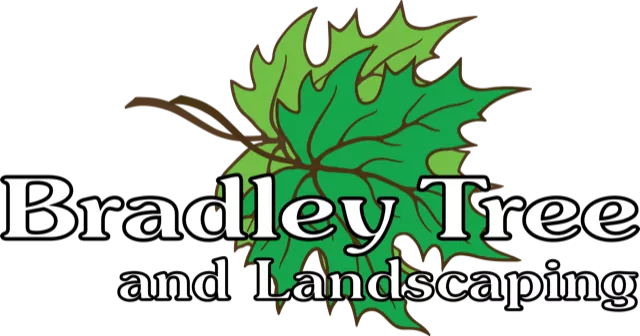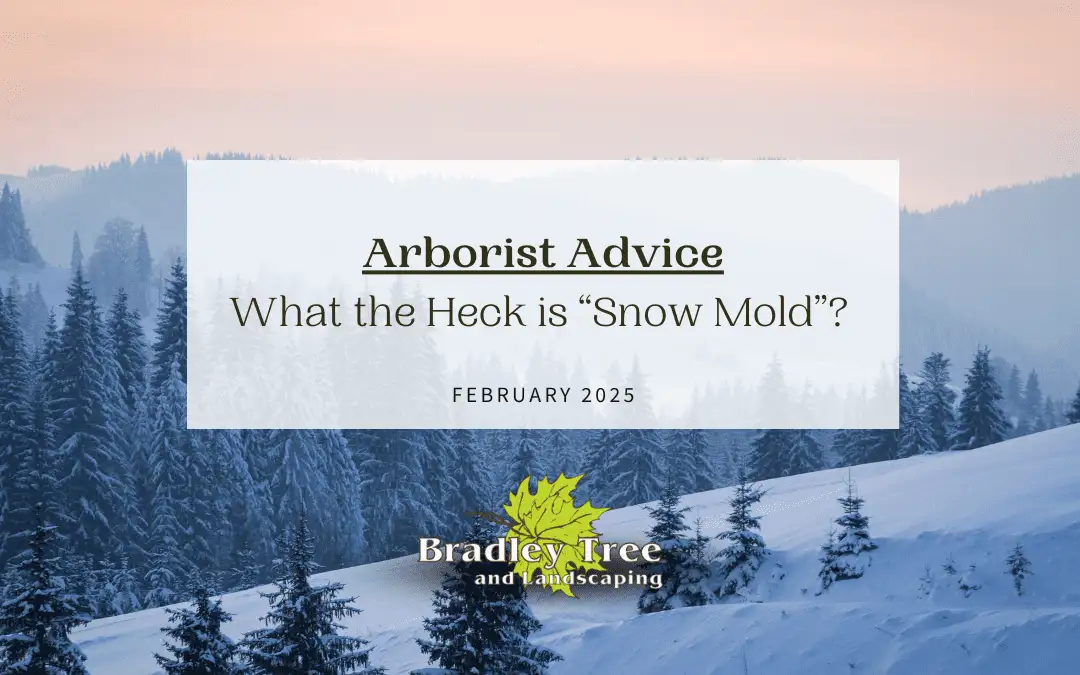Hello and welcome back to the Bradley Trees Blog! Here on the blog, we go to great heights to please you! Once the snow sets in, you probably don’t pay much mind to your lawn, thinking more about where your shovels, snowblower and jackets are, and how you’ll keep up with clearing the snow from your car and driveway.
Once the snow starts to melt, then fall again, and recede, in a cycle over and over, you might begin to notice a white or pink fuzz appearing on your grass. You’re probably here wondering, “what on earth is that?” That is the topic of our post here today, snow mold on grass.
What is Snow Mold?
There are two types of snow mold that can be found on home lawns. Gray snow mold and pink snow mold are similar but slightly different. Gray snow mold typically is due to extended periods of snow cover on your lawn, whereas pink snow mold can appear with or without snow cover. Both are fungal diseases targeting grass blades in late winter and early spring which can spell disaster for your lawn.
What Causes Snow Mold?
The first step in combating snow mold is understanding the causes, so you can protect your lawn.
- Gray Snow Mold: Most grass species can be affected by gray snow mold, especially if they’ve been covered with snow for extended periods of time. However, it can also occur when lawns have improper drainage and snow accumulates on unfrozen ground.
- Pink Snow Mold: Alternatively, pink snow mold targets annuals like bluegrass, bentgrass, kentucky bluegrass and ryegrass. It appears mostly during periods of high humidity when the air temperature is between 30 and 60 degrees F. Layers of dead grass can also increase the chances of pink mold developing.
Snow Mold Symptoms
What to look out for if you’re determining whether or not you might have snow mold? Well, for Gray Snow Mold – Light brown patches in your lawn or gray-black colored fungus along the edges. Then for Pink Snow Mold- Sunken patches or thick pink-ish white grass blades in winter or spring
How Do I Treat Snow Mold?
Luckily, both varieties are relatively easy to handle, depending on how severe it is. To get started, begin raking with a light hand over the affected areas. This removes dead grass and allows room for new growth. Also, fungicide treatments can provide some relief if applied before a heavy snowfall. However, fungicide treatments aren’t always necessary due to how unpredictable the weather is and the other options for snow mold removal after the fact.
When the snow clears, resuming regular lawn maintenance like fertilizing and weed control can help restore your lawn’s health after minor snow mold damage.
Can I Prevent Snow Mold?
Yes, you can! Prevention is the best method in dealing with snow mold. Snow mold thrives in lawns that are stressed already, with lots of dead grass material. So, what to do? Nurture your lawn and perform routine maintenance to lead to a healthier landscape! Also make sure to check your drainage is good, which limits standing water thus reducing your risks for other lawn diseases.
The Bradley Tree Method
Don’t forget to stay up to date with your favorite Buffalo arborists by following us on our blog and on Facebook, Instagram, and YouTube! Reach out today by phone or using our online contact form. Are your trees ready to face the cold? If not, now is the perfect time to take action. Schedule a consultation with a local arborist and give your trees the care they deserve—because healthy roots mean healthy trees

